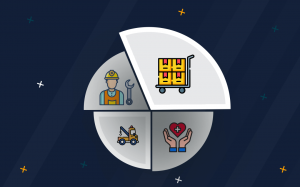please click here:
https://www.dragon-abrasives.com/sandblasting-media.html
Introduction
In the modern industrial world, surface preparation, cleaning, and finishing are crucial to achieving product durability and aesthetics. Among the various media used for surface treatment, Stainless Steel Shot stands out as a superior material that delivers consistent, high-quality results. Its strength, corrosion resistance, and recyclability make it an essential choice across industries such as automotive, aerospace, construction, and foundries.
This article explores stainless steel shot in depth—its composition, manufacturing process, technical advantages, and applications—while comparing it with other blasting media to help you make informed purchasing and usage decisions.
What Is Stainless Steel Shot?
Stainless steel shot refers to spherical granules made primarily from stainless steel alloys such as AISI 304, 316, or 430. These small metallic balls are used as abrasive media in blasting and peening operations to clean, polish, strengthen, or finish metallic surfaces.
Unlike ordinary carbon steel or cast iron shot, stainless steel shot contains chromium, nickel, and sometimes molybdenum, which gives it remarkable corrosion resistance and surface durability. The result is a clean, bright, and contamination-free finish on various metals, including aluminum, brass, and stainless steel components.
Composition and Manufacturing Process
The manufacturing process of stainless steel shot involves melting stainless steel scrap or alloys, atomizing it into spherical particles, and heat-treating it for uniform hardness and density.
Typical Chemical Composition:
| Element | Approximate Content (%) | Purpose |
|---|---|---|
| Chromium (Cr) | 16–20 | Provides corrosion resistance |
| Nickel (Ni) | 8–10 | Improves ductility and toughness |
| Iron (Fe) | Balance | Base metal structure |
| Carbon (C) | <0.1 | Increases hardness |
| Manganese (Mn), Silicon (Si) | <2 | Enhances wear resistance |
Each element contributes to the overall performance of the shot, ensuring minimal wear during blasting and consistent surface finish quality.
Types of Stainless Steel Shot
There are different grades and sizes of stainless steel shot available depending on the intended application:
-
AISI 304 Shot: Offers excellent corrosion resistance; ideal for non-ferrous metals.
-
AISI 316 Shot: Contains molybdenum, providing superior resistance to chemicals and saltwater corrosion.
-
AISI 430 Shot: Ferritic grade; cost-effective and suitable for less demanding applications.
The shot size typically ranges from 0.1 mm to 3.0 mm. Smaller sizes are used for fine polishing, while larger ones are employed in heavy cleaning or peening processes.
How Stainless Steel Shot Works in Surface Treatment
When propelled by compressed air or centrifugal force, stainless steel shot impacts the surface of a workpiece, removing rust, scale, or paint. The repeated impact creates a smooth, clean, and slightly hardened surface that improves coating adhesion or fatigue resistance.
The key advantage is that stainless steel shot does not leave ferrous contamination or dust residues, which is vital for industries where surface purity is critical, such as medical or food equipment manufacturing.
Comparison: Stainless Steel Shot vs. Other Blasting Media
| Media Type | Durability | Surface Finish | Corrosion Resistance | Contamination Risk | Recyclability | Cost Efficiency |
|---|---|---|---|---|---|---|
| Stainless Steel Shot | Excellent | Bright and smooth | Excellent | None | High | High |
| Carbon Steel Shot | Good | Matte finish | Poor | Moderate | High | Moderate |
| Aluminum Oxide | Fair | Rough | Excellent | None | Low | Low |
| Glass Beads | Moderate | Smooth | Excellent | None | Low | Moderate |
| Cast Iron Grit | High | Rough | Poor | High | Moderate | Low |
This comparison illustrates that stainless steel shot offers the best balance of performance, cleanliness, and recyclability—making it the preferred option for precision industries.
Key Advantages of Stainless Steel Shot
1. Extended Service Life
Stainless steel shot lasts significantly longer than non-metallic abrasives or carbon steel shot, reducing replacement costs.
2. Corrosion and Rust Resistance
Thanks to its chromium content, it does not corrode even when exposed to moisture, maintaining stable blasting performance.
3. Clean, Non-Contaminating Finish
Unlike ferrous abrasives, stainless steel shot does not embed impurities into the workpiece surface, ensuring a bright and residue-free finish.
4. Eco-Friendly and Recyclable
It can be reused hundreds of times before replacement, reducing waste and lowering environmental impact.
5. Consistent Performance
The uniform spherical shape provides even coverage, consistent surface roughness, and efficient cleaning results.
Industrial Applications
Automotive Industry:
Used for cleaning and peening engine parts, crankshafts, and suspension components to improve fatigue strength.
Aerospace Industry:
Applied in surface finishing of turbine blades, landing gear, and structural components requiring high fatigue resistance.
Foundry and Metal Casting:
Removes scale, rust, and casting residues without altering dimensional accuracy.
Food Processing Equipment:
Ensures a clean, contamination-free finish on stainless steel equipment surfaces.
Construction and Marine:
Used to prepare metal surfaces before coating or painting for better adhesion and corrosion resistance.
Choosing the Right Stainless Steel Shot
Selecting the right stainless steel shot depends on several parameters, including:
-
Shot Size: Larger sizes for heavy-duty cleaning; smaller ones for polishing or delicate surfaces.
-
Hardness: Typically ranges between 40–55 HRC, balancing impact energy and wear resistance.
-
Shot Material: Choose between 304, 316, or 430 based on corrosion exposure and cost.
-
Blasting Equipment Compatibility: Ensure your blasting system supports metallic abrasives to avoid excessive wear.
It's recommended to test different grades under controlled conditions to determine optimal results for your specific process.
Maintenance and Handling Tips
To maximize the lifespan and efficiency of stainless steel shot:
-
Keep the Media Clean: Remove dust, rust particles, or broken shot regularly from the blasting system.
-
Control Operating Pressure: Excessive pressure can damage both the shot and the workpiece surface.
-
Proper Storage: Store in dry, covered areas to prevent moisture exposure.
-
Regular Equipment Inspection: Ensure turbines, hoses, and nozzles are free from wear or blockage.
Cost Considerations
Although stainless steel shot is more expensive initially, its long lifespan and recyclability lead to lower total operational costs.
For example, while glass beads may require replacement after a few cycles, stainless steel shot can last hundreds of cycles before degradation, significantly reducing media consumption and labor time.
Environmental Benefits
As industries move toward greener manufacturing, stainless steel shot stands out for its sustainability:
-
It generates minimal dust and waste.
-
It reduces the need for chemical cleaning agents.
-
It can be fully recycled, making it a closed-loop material.
This not only saves resources but also aligns with global environmental standards for industrial operations.
Common Challenges and Solutions
Challenge: Media breakdown leading to reduced cleaning efficiency.
Solution: Implement a regular screening and recycling system.
Challenge: Surface over-peening or roughness.
Solution: Adjust air pressure and shot size for the specific material hardness.
Challenge: Equipment wear.
Solution: Use wear-resistant materials for turbines and nozzles compatible with metallic abrasives.
Future Trends in Surface Treatment
Advancements in material science and automation are leading to more efficient blasting systems. Stainless steel shot is increasingly being optimized with:
-
Enhanced alloy compositions for longer lifespan.
-
Automated sorting systems for real-time media recycling.
-
Integration with robotic blasting technology for precision applications.
These developments promise to make stainless steel shot blasting even more efficient, sustainable, and cost-effective in the coming years.
Frequently Asked Questions
1. What is the lifespan of stainless steel shot?
Depending on the application, stainless steel shot can be reused 500–1000 times before replacement.
2. Can stainless steel shot be used on aluminum surfaces?
Yes. It effectively cleans aluminum without causing contamination or discoloration.
3. How should used stainless steel shot be disposed of?
It can be recycled as stainless scrap metal, making it environmentally friendly.
4. What's the ideal hardness range for stainless steel shot?
A hardness of 40–55 HRC is ideal for most cleaning and peening operations.
5. Does stainless steel shot affect coating adhesion?
Yes, positively—it enhances coating adhesion by creating an evenly roughened surface that improves mechanical bonding.
Article Summary
Stainless steel shot is a high-performance blasting media offering superior corrosion resistance, durability, and recyclability. Ideal for cleaning, polishing, and peening applications across industries, it ensures bright, contamination-free finishes and long-term cost efficiency.






